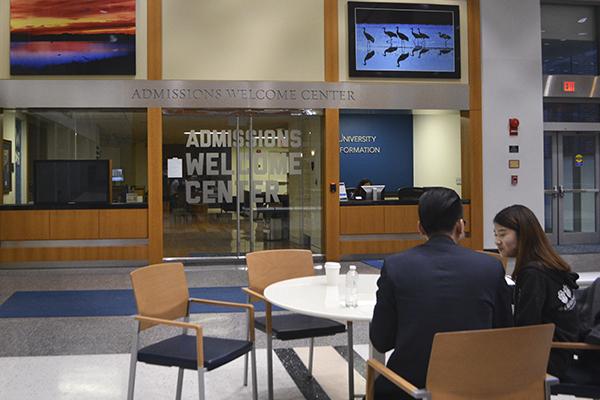Updated: Feb. 6, 2016 at 10:40 a.m.
GW’s enrollment office has hired a specialist to help look at why students stay at the University.
Officials recently expanded the responsibilities of the enrollment office to not just track why students enroll at GW but why they might leave. Experts said the University’s ever-sharpening focus on retention is on par with other institutions and that even as GW undergoes budget cuts across most departments, investing in a specialist and analyzing long-term data is a smart way to boost its four-year graduation rate.
GW’s enrollment management division will now be called the Division of Enrollment Management and Retention, a name that nods to one of University President Steven Knapp’s top priorities this year. Knapp said in August the number of students who start college but do not graduate are the “grimmest part of the current higher education picture.”
Laurie Koehler, the vice provost for enrollment management and retention, said the office would connect faculty, staff and administrators “to ensure that those who matriculate, succeed.” She said one way to measure that is through four-year and six-year graduation rates.
Koehler said the office recently hired an enrollment retention specialist, and over the next year, the office will develop a plan and “reallocate additional existing divisional resources to ensure that we have the attention designated to focus on this goal.”
“The role of the Enrollment Management and Retention office is not to replicate the excellent work already being performed by others. Essentially, everyone at the University shares the responsibility for retaining and graduating students,” Koehler said in an email.
Koehler did not provide any additional details about the specialist.
Koehler said the retention side of office will serve as an extension of the enrollment efforts, and staff there will collect and analyze data to develop a plan “to assess institutional progress.”
Officials brought Koehler to campus in 2013 in part to use data to figure out why students may choose other institutions over GW. Since then, the admissions office has begun to use high-tech software to record every email, phone and in-person interaction staff have with prospective students.
Over the last eight years, about one-fifth of each freshman class transferred or dropped out after four years, according to GW’s Office of Institutional Research and Planning. Overall retention at GW has stayed at 89 percent or higher over the past decade.
About three-quarters of each freshman class graduate in four years, according to the institutional data. Most of GW’s peer schools have higher four-year graduation rates and GW’s relatively low completion rate added to its drop in national rankings last year.
Experts said closely examining the factors that can drive students away from an institution before they complete their degrees can help schools financially: When students drop out or transfer, universities lose dollars they’ve already invested in those students, and can miss out on future alumni donations.
Knapp announced at the end of last semester that all central administrative offices will make 3 to 5 percent budget cuts each year for the next five years. Last fall, officials made 5 percent cuts across all administrative divisions after fewer students enrolled in graduate and professional programs than officials projected.
Neal Hutchens, an associate professor of higher education at Pennsylvania State University, said the benefit of collecting years of data about students who enroll and graduate could outweigh the cost of any extra spending ‒ like the hiring of an enrollment specialist.
“Academic programs haven’t fared well in recent years and faculty in higher education, we’re always nervous when we see expansion of administrative offices. But for what the office is going to do looking forward, an individual like this could be of value,” he said.
He said technology like the software in GW’s admissions office allows administrators to examine which students are most likely to leave, and to examine variables that may not have been considered before, like the gender or socioeconomic status of students.
Leticia Oseguera, a higher education research associate and assistant professor at Pennsylvania State University, said institutions nationwide have begun to centralize resources to use data to track factors like four-year graduation rates more effectively.
She said because so many institutions rely on alumni donations, retention can also benefit their future fundraising efforts because students likely won’t donate somewhere if they leave before graduating.
About 10 percent of alumni donate to the University annually. Officials have vowed to focus on alumni giving as part of GW’s $1 billion campaign.
“If you think of the long-term costs, if a student leaves, they lose that source of alumni donations. They paid an instructor to teach that student, but now that particular major might be under-enrolled and they might have to teach another round of introductory courses,” she said.
This post was updated to reflect the following corrections:
The Hatchet incorrectly reported that the admissions office had hired a specialist. The office of enrollment management and retention has hired the specialist. The Hatchet incorrectly reported that Laurie Koehler declined to say which administrators, faculty and staff the division would work with, or what policies they plan to implement. She did provide those responses. The Hatchet also used Koehler’s old title instead of her new one, the vice provost for enrollment management and retention. We regret these errors.







